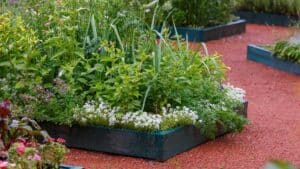Sky plants, air plants and other affectionate names all lead us back to the same species of plant that is gaining popularity and attention with its little ruffled silvery-green look and its great feature that allows it to survive without being planted in soil: the tillandsia. Tillandsias are epiphytic plants, which means that they cling to other plants without parasitizing them. Their roots, often very short and not very developed, are not used to feed themselves, but to cling to their host. It is thanks to their rigid and thick leaves that they draw water and minerals from the atmosphere to feed and develop.
What to do with tillandsias
Since they live without soil, the daughters of the air allow you to be creative and find unusual places to put them. Here are some ideas:
- Hanging, with a metal or plastic wire, as if they were flying
- Simply placed on a piece of furniture or a windowsill
- In a terrarium
- Hanging on a metal structure
- In a small vase of interesting shape – without soil of course
- Even stuck to a structure, a frame, a rock
- … whatever your imagination suggests
Maintenance of tillandsias
Lighting
Tillandsias need a good light to be able to thrive: forget dark rooms without windows, your plants will wither away. They even appreciate a few hours of direct sunlight.
Watering
In order for the plant to absorb water, it is essential to wet the foliage. However, you don’t want to keep the leaves covered with water at all times, since the plant needs to breathe. So it takes a good dose. Spray your tillandsia with distilled water, ideally in the morning, once or twice a week.
Give your air plant a bath
Plunging the plant into a bath of temperate water without chlorine for a few minutes to an hour, once a week, will be very beneficial. If your environment is very dry, you can even bathe your plants two to three times a week. If your tillandsia’s leaves curl in towards the center, it is a sign of dehydration and a few minutes of bathing will most likely not be enough. Put the plant in water overnight and shake it well before putting it back in. Obviously, if your plant is part of a very large structure, it will not be possible to bathe it. So be sure to spray it regularly.
Air circulation
As their name suggests, air plants like air to circulate around them. You can take them outside in the spring and summer or place them near a window that you open regularly. If you place them in a glass bubble or other container, make sure they are not too tightly packed and that there are openings for air to pass through.
Have fun with tillandsias, they are beautiful and quite easy to live with if you give them the right care. They are affordable plants that allow you to let your imagination run wild: be creative!






